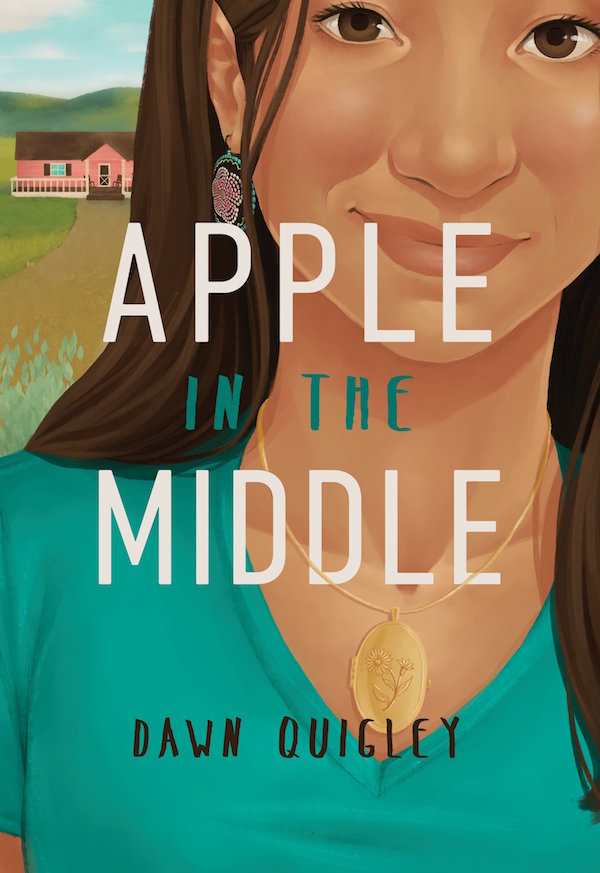Book Description
for Apple in the Middle by Dawn Quigley
From Cooperative Children's Book Center (CCBC)
“Apple” can reference something precious and much loved: apple of one’s eye. “Apple” is also a derogatory term for Native people: red on the outside, white on the inside. Apple, 12, never knew her Ojibwe/Michif mom, who grew up on the Turtle Mountain Chippewa Indian Reservation in North Dakota but died in a car accident while pregnant. Apple has been raised by her white dad and her stepmom. Now she’s spending the summer on the Turtle Mountain Reservation. For the first time she is learning about her mom, whom her dad doesn’t talk about, and her heritage, and meeting members of her extended family of blood and community. A story that hits its stride at the point Apple arrives on the reservation features an abundance of warmth and humor, including Native humor that Apple is being exposed to for the first time, and wonderfully complex, nuanced characters. A subplot involving a man who was in love with Apple’s mom when they were teens is less compelling, as is the framing story with her dad, stepmom and little brother, but it all comes together as Apple begins to see herself not as someone in the middle or caught between, but as a girl connected to many good people and things across all aspects of her life. (Ages 9–13)
CCBC Choices 2019. © Cooperative Children's Book Center, Univ. of Wisconsin - Madison, 2019. Used with permission.


